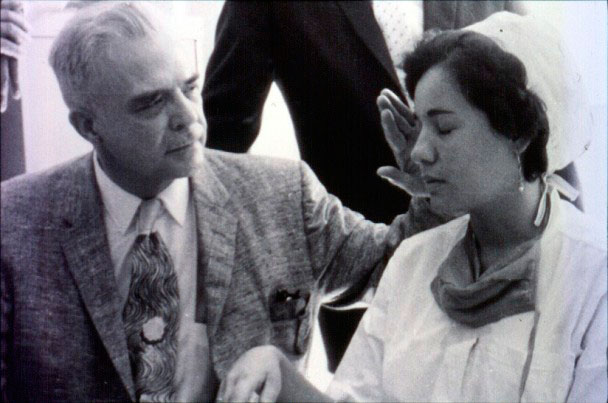Brother
Professional
- Messages
- 2,590
- Reaction score
- 528
- Points
- 113

Hello everyone, people! This is Stalilingus on the wire !! How are you and your success in manipulation? I hope everything works out, and if not - don't be afraid to try again! Today is an article on gypsy hypnosis. I can't help but say it, but "I hate fucking gypsies!" (from the movie "Big Kush") By the way, we deliberately did not put a photo of our bastard street gypsies.
Let's see how these dirty bastards manipulate people and why some give them all their money, and sometimes even property. Well, let's go!
The manipulative methods and techniques used by street gypsy hypnotists are as follows:
The method is called “speech tricks”. The fact is that a gypsy on the street often cannot directly say: "Give me this!" Verbal tricks are divided into:
1) "Truisms". This word means a true statement that is in strict accordance with reality, but solves the fraudulent strategy of the fraudster. For example, a gypsy wants to sell a sweater of poor quality in a beautiful package in a deserted place; she does not directly offer "Buy!", but says: "Well, the cold! Great, very cheap sweaters! Everyone buys, you won't find such cheap sweaters anywhere!" And fiddles with bags with sweaters. Such an unobtrusive purchase offer is more directed to the subconscious and works better, since it corresponds to the truth and passes the critical barrier of consciousness. It is really "cold" (this is already one unconscious "yes"), the package and the pattern of the sweater are really beautiful (the second "yes") and really very cheap (the third "yes"), so without any words "buy!" the client is born, as it seems to him independent.
2) "The illusion of choice. " This verbal trick imperceptibly hides some hidden statement of a gypsy woman or a street hypnotist about the presence of an object or phenomenon in an ordinary phrase. For example, they don't ask you whether you will buy or not, but say: “How cute you are! And it suits you and this thing looks great. Which one will you take, this or this? ”, And the gypsy looks at you with sympathy: as if the question of what you buy this thing has already been resolved. Indeed, the last phrase of the gypsy contains a trap for consciousness, imitating your right to choose, but in fact they are deceiving you, since the choice "buy - not buy" is replaced by the choice "buy this or buy that."
3) "Teams hidden in questions." Street experience of gypsy hypnosis showed that if the command is hidden under the guise of a request in the question, then the effect is more reliable. For example, you need to close the door. You can say to someone: "Go and close the door!" Could you close the door? "The second option works better and the client does not feel cheated. Another example of a command hidden in the question:" Do you already know what to take?"
4) "Moral impasse". This method consists in the fact that the seller persuades not to “buy”, but to persuade him to “just try” his product. In this case, we have a trap for consciousness, since nothing dangerous or bad seems to be offered, and it seems that complete freedom of any decision remains, but in fact, it is enough to try, as the seller immediately asks another tricky question : “Well, did you like it? Did you like it? ”, And although we are talking only about the sensations of taste, in fact, the question is“ will you buy or not ”. And since the thing is objectively tasty, you cannot say to the seller's question that you didn't like it and answer that you “liked it,” thereby giving an involuntary consent to the purchase. Moreover, as soon as you answer the seller that you "liked", as he, without waiting for your other words.
So it turned out that they innocently persuaded only to try, but it turned out that they persuaded to buy, so much so that you can't refuse in an amicable way, since you find yourself in a moral dead end, to lie that the thing is tasteless is embarrassing. In other words, the point of the trick is that when a person has given the go-ahead for one thing, he must give the go-ahead for another, so as not to look like a scoundrel in his own eyes. Therefore, it is very important in all situations to remain confident in yourself, and to be able to say "no" to any person, especially a seller or a criminal fraudster. Paradoxically, excessive intelligence attracts criminal fraudsters of all stripes to such a person.
Therefore, if in a person, along with intelligence, there is no proper rigidity, he will easily become a victim of deception, falling under the influence of the outside. And do not deceive yourself. If such a person does not know how to switch modes of brain activity (that is, to speak with intellectuals in one language, and with the proletariat and even more scammers in another), then he will constantly attract various representatives of criminal communities specializing in deceiving a client to his person.
5) "Than ... - so ...". The essence of this speech psychotechnics lies in the fact that the gypsy connects what is happening with what she needs. A gypsy selling hats may say: "Oh, I see, you are lucky, this hat suits you very much, the longer you try it on, the more you like it ...".
6) "Stirlitz method". According to the laws of memory, a person in any conversation remembers the beginning and end, and the middle, as a rule, is forgotten and falls out of memory, therefore, the art of entering into a conversation and the art of exiting a conversation are important in street psychological hypnosis. The gypsy criminal art of waking hypnosis is that the gypsy, with intonation and clearly expressed non-verbal behavior, emphasizes the words that she needs and puts them at the end of the conversation.
7) "As soon as ... then ...". This speech technique consists in the fact that a fortuneteller, for example, a gypsy woman, seeing for certain the forthcoming action of the object of her criminal hypnotic influence, says, for example: "As soon as you see your life line, you will immediately understand me! "Here, by the subconscious logic of the client's gaze on her palm (on the" life line "), the gypsy logically adds the building up of confidence in and everything that she does. At the same time, the gypsy deftly inserts a trap for consciousness with the end of the phrase "immediately understand me", the intonation of which means another, hidden from consciousness, the real meaning - "immediately agree with everything that I do."
8) "Three stories". The trick consists in the fact that the hypnotist tells a certain story No. I, about in the middle, interrupts it and begins to tell story No. 2, which, approximately, also interrupts. Then the hypnotist tells story no. 3 in full, then finishes story no. 2, then finishes story no. I. Stories I and 2 are fully realized and remembered by the client, and story no. 3 is quickly forgotten and almost unconscious, therefore it is in it that the gypsy includes instructions and commands for the client's subconscious.
9) "Allegory". A representative of the Gypsy criminal community expresses an advantageous idea allegorically, in the form of a short story or anecdote, while the hidden meaning of the story is the thought that the gypsy undoubtedly wanted, bypassing the criticism of consciousness, to introduce into the subconscious of the object of her hypnotic manipulations. At the same time, the brighter and more emotional the anecdote or story, the higher and more reliably any thought important for the manipulator is introduced into the consciousness of the object of hypnotic manipulation.
10) "Scattering". This technique consists in the fact that by intonation, pauses, volume, touch, gestures, facial expressions, etc., separate words are highlighted, which contain individual commands and wishes of the gypsy woman. Such words are imperceptible to consciousness because interspersed into the conversation and mixed with secondary words (scattered throughout the conversation), but the subconscious of the object will only react to these words, because the commands hidden by the scattering technique work better than those expressed in a different way. To master this technique, you need to be able to speak with expression and underline the right words.
There are the following methods of hidden (fixed) messages:
a) Kinesthetic methods (the most effective): touching the hand, touching the head, any stroking, patting on the shoulder, shaking hands, touching the fingers, placing the hands on the client's hands from above, the client's hands taken in both hands , etc.;
b) Emotional ways: increasing emotion at the right moment, lowering emotion, emotional exclamations or gestures;
c) Speech methods: changing the volume of speech (louder, quieter): changing the tempo of speech (faster, slower, pauses); change intonation (decrease - increase); accompanying sounds (tapping, snapping fingers); changing the localization of the sound source (right, left, top, bottom, front, back); changing the timbre of the voice (imperative, command, hard, soft, insinuating, lingering);
d) Visual methods: facial expressions, eye expansion, hand gestures, finger movements, changes in body position (tilts, turns), changes in head position (turns, tilts, lifts), a characteristic sequence of gestures (pantomime), rubbing, own chin.
e) Written methods. In any written text, you can use the scattering technique to insert hidden information, while the necessary words are highlighted: in font size, in a different font, in a different color, italic font, paragraph indentation, a new line, etc.
Source: Based on the lectures of academician VM Kandyba

